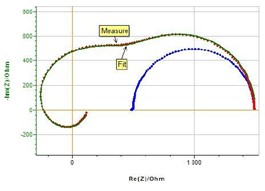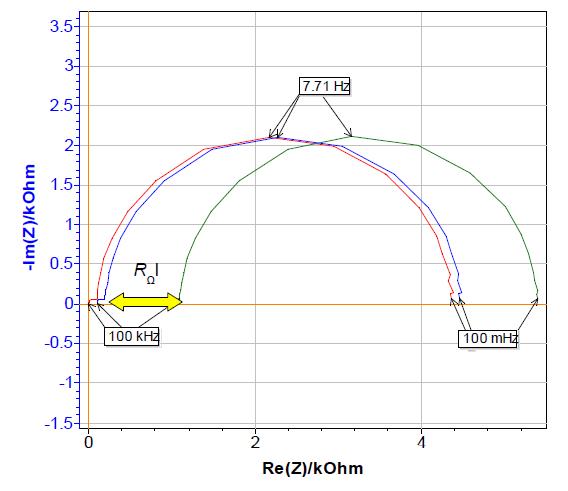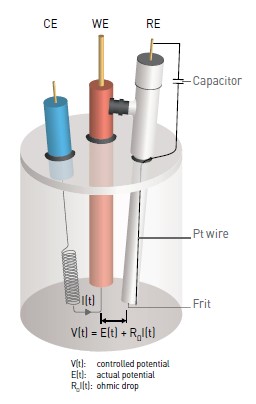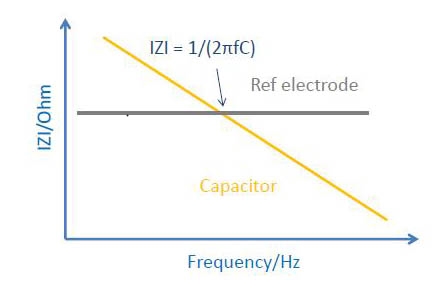Checking and validating reference electrodes (Electrochemistry basics series)
Latest updated: November 15, 2024

Ohmic drop
Even if the instrument is stable (good bandwidth set, see app note 04), measurements can be impacted negatively in both DC and EIS measurements by adding ohmic drop. This will induce a voltage shift for DC measurements (Fig. 1a) or introduce resistance components in series for EIS data (Fig 1b).

Fig 1a.

Fig b.
Figure 1.a) CV curves of [(Fe(CN)63-] (0.6 mM) + KCl (0.1 M). No resistance and resistance
of 100 Ω added in series with the WE. b) Nyquist plot (below) of circuit #3 of TestBox-3 in the. No resistance,
resistance of 100 Ω, and 1 kΩ added in series with the WE. From App Note 27
NOTE: a series of App Notes dealing with Ohmic drop is available.
- AN#27 – Ohmic Drop: Part I: Its Effect on measurements
- AN#28 – Ohmic Drop: Part II: Introduction to Ohmic Drop measurement techniques
High-frequency artifacts in EIS measurements.
The problematic effect of a high impedance reference electrode can be observed at high frequencies. In such cases, an inductive loop shows up at high frequency (Fig. 2).

Fig. 2: Loop at high frequency due to a bad reference electrode. see Tutorial
To fix this, just add a capacitor in parallel to your reference electrode. At high frequency, the impedance of the capacitor will be lower than the impedance of the bad reference electrode.
 Fig. 3a
Fig. 3a

Fig. 3b
Fig. 3: a) Setup with a capacitor in series. b) evolution of impedance for
reference electrodes equipped with a capacitor as a function of frequency.
For more information see How to obtain quality measurements
How to check your reference electrode is OK.
First of all, periodically check the stability of your reference electrode by performing an Open Circuit Voltage (OCV) measurement in two-electrode set-ups using a “golden” reference electrode. A “golden” reference electrode is a reference electrode that is not used for measurement but only for metrology validation purposes.
To check your reference electrode, perform an EIS measurement with a two-electrode connection. Choose Galvano Mode EIS (GEIS) to avoid polarization of your reference electrode.
The reference electrode is used as a working electrode and a platinum or gold electrode can be used as a counter electrode.
The impedance of the reference electrode should be below 1 kΩ. If it is higher, the junction needs to be replaced.
For more information, please click here




